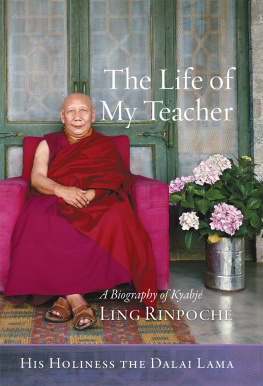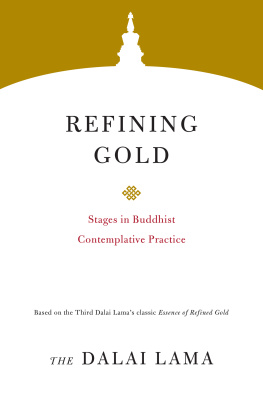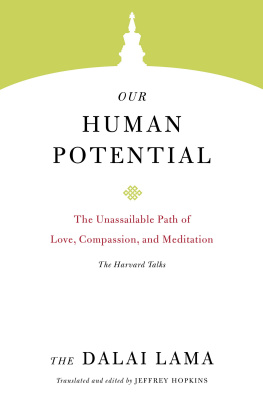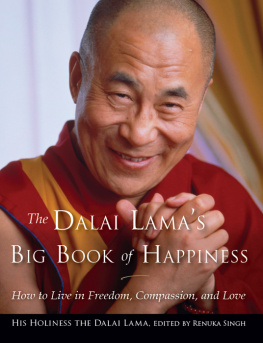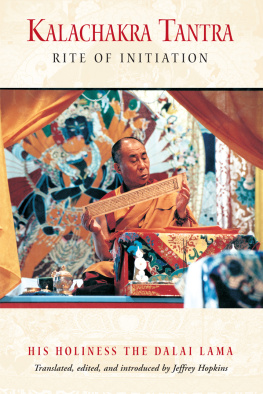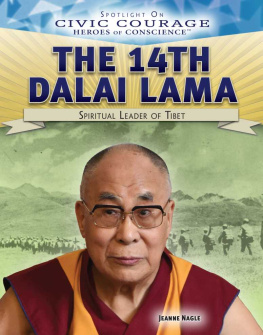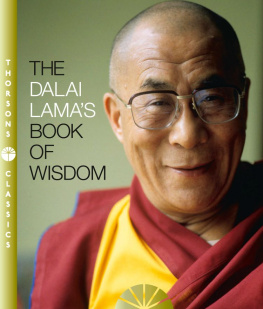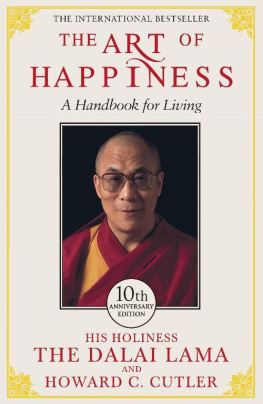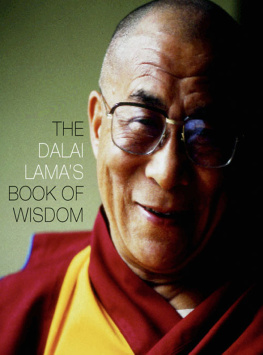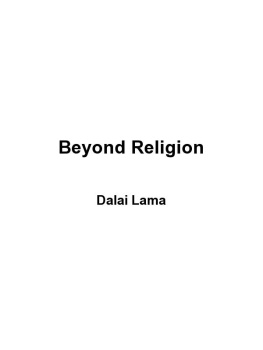Dalai Lama - My Spiritual Journey
Here you can read online Dalai Lama - My Spiritual Journey full text of the book (entire story) in english for free. Download pdf and epub, get meaning, cover and reviews about this ebook. year: 2010, publisher: HarperCollins, genre: Religion. Description of the work, (preface) as well as reviews are available. Best literature library LitArk.com created for fans of good reading and offers a wide selection of genres:
Romance novel
Science fiction
Adventure
Detective
Science
History
Home and family
Prose
Art
Politics
Computer
Non-fiction
Religion
Business
Children
Humor
Choose a favorite category and find really read worthwhile books. Enjoy immersion in the world of imagination, feel the emotions of the characters or learn something new for yourself, make an fascinating discovery.

- Book:My Spiritual Journey
- Author:
- Publisher:HarperCollins
- Genre:
- Year:2010
- Rating:3 / 5
- Favourites:Add to favourites
- Your mark:
- 60
- 1
- 2
- 3
- 4
- 5
My Spiritual Journey: summary, description and annotation
We offer to read an annotation, description, summary or preface (depends on what the author of the book "My Spiritual Journey" wrote himself). If you haven't found the necessary information about the book — write in the comments, we will try to find it.
My Spiritual Journey — read online for free the complete book (whole text) full work
Below is the text of the book, divided by pages. System saving the place of the last page read, allows you to conveniently read the book "My Spiritual Journey" online for free, without having to search again every time where you left off. Put a bookmark, and you can go to the page where you finished reading at any time.
Font size:
Interval:
Bookmark:
The Dalai Lama
Spiritual
Journey
Personal Reflections, Teachings, and Talks
Collected by Sofia Stril-Rever
Translated by Charlotte Mandell

The Dalai Lama is fourteenth in a lineage of reincarnations that came into being with the first emanation of enlightened compassion, Gendun Drup, in 1391. The Dalai Lama discusses the anecdotes and accomplishments of his previous lives as naturally as he relates his childhood memories. He maintains a living link with his thirteen predecessors, often mentioning their beloved, familiar presence. He is seventy-four years old, but since he took on the burden of spiritual and temporal leadership of Tibet, his awareness encompasses seven centuries of history. In this book we meet the Dalai Lama at a time when he is reflecting on his next incarnation, for he knows that his present existence is drawing to an end. But he also knows that his life will not stop with death.
He asserts, however, that he is no one special but a human being like everyone else. Meeting him calls many certainties into question, for his human dimension does not exhibit the ordinary limits of our condition; I have often wondered whether the essential teaching we receive from him is simply about becoming fully human.
I asked myself this question again on March 10, 2006, in Dharamsala, as I listened to the speech the Dalai Lama was giving to commemorate the Lhasa insurrection. I had the feeling that his words carried far beyond the cloud-wrapped mountains and the hundreds of people gathered in a cold, steady rain to hear him. He called for human rights to be respected in Tibet, but the range of his words was universal. It was our humanity he was defending against a barbarism that dehumanizes it. The Dalai Lama was appealing to the worlds conscience.
For fifteen years, I had followed and translated his teachings on the meditation system of the Kalachakra (the Wheel of Time), regarded as supreme by Tibetan Buddhists and dedicated to world peace. That day I saw a profoundly coherent connection between his formidable humanity, his words as a master of the Wheel of Time, and his political discourse. Thinking back on this, I understood that to be human means for him to live a spirituality that comes from the heart and is spontaneously manifested in his everyday life, as in his exchanges with world-famous scientists or his declarations in international forums. It is certainly not by chance that His Holiness the Fourteenth Dalai Lama has adopted a policy called the Middle Way toward China, since the Middle Way represents, in Buddhism, the essence of the wisdom that perceives emptiness.
I realized that with such an approach to spirituality, one could break down the barriers that usually compartmentalize activities, thoughts, and feelings and reach the universality of the heart. And when I agreed to let these barriers fall, I had an experience of transparency and internal conversion. I understood that, for the Dalai Lama, prayer goes beyond forms of belief. To pray starting from what is universal to all religions invites us to discover the internal dimension of our humanity and to reclaim our human-ness.
I discussed this at length with Samdhong Rinpoche, prime minister of the Tibetan government in exile and companion in exile of the Dalai Lama; I had met him when I was studying in India at the Tibetan University of Sarnath, of which he was rector. I suggested that I bear witness to this open spirituality of the Dalai Lama by publishing a selection of texts that had not previously been published in French, including his March 10 speech and his speeches given in the international arena. This publication would show the impact of the Dalai Lamas humanity on our world at a critical time in history when the survival of future generations seems threatened. His declarations, calling for a spiritual revolution that is also an ethical revolution, urge us to acknowledge that humanity is one, in conformity with the Buddhist principle of interdependence. The awareness that everything is connected in the participatory reality of life is expressed on the individual level by compassion and on the collective level by universal responsibility. These notions have contributed to renewing the terminology and forging the spirit of recent United Nations texts dedicated to a culture of peace.
After the Dalai Lama agreed to the general outline of my work, which at first was titled An Appeal to the World, I devoted myself to it, and in the course of my research a second form of coherence struck me: that of the temporal continuity of the Dalai Lamas thinking. Indeed, although over the years his statements have been supported with new references and linked to current events and to the developments of contemporary society, analysis of those statements has followed a current that leads us back to the same sourcea seemingly inexhaustible wisdom and kindness and a truth that is unfailing.
I had a striking experience of this in February 2008, at the end of our long interview for the film The Dalai-Lama, One Life After Another.of doubt. During its showing, which was planned for August, wouldnt the film be seen as out of step with current events? But very quickly it became clear that both before and after these events, the Dalai Lamas commitment to nonviolence, reconciliation, and dialogue remained unchanged. I came to the conclusion that his words have a pertinence that does not fluctuate with the events of history. His truth possesses the rare quality of constancy.
I asked myself why this was. The reason seemed to me to be that the Dalai Lamas vision embraces universal life, in perfect reciprocity. Those who reach this level of truthcalled satyagraha by the Mahatma Gandhi, another great figure of humanity and one dear to the Dalai Lamaoppositions no longer antagonize each other but join together in harmonious complementarity. Thus, the Chinese, for instance, are not enemies but brothers and sisters. My challenge was to make such profundity perceptible in the structure of the book.
In the last phase of my work I realized that the first-person texts I had selected made up a spiritual autobiography. I use the term spiritual here in the sense that the Dalai Lama gives itnamely, the full blossoming of human values that is essential for the good of all. I spoke to Samdhong Rinpoche about this idea in December 2008, during a stay in Dharamsala. When the Dalai Lama became aware of it in early January 2009, he approved of it, saying that he was very happy with the concept. He found that his statements as presented in this book articulate his fundamental aspirations, and he also authorized the publication of the facsimile of his speech on March 10, 2007, annotated with his handwritten notes and preserved by Samdhong Rinpoche.
I understood from this confirmation that I had met the challenge I set in writing this bookthe challenge of making it come alive and bringing the reader close enough to the words of the Dalai Lama to hear them and meditate on them in an invigorating heart-to-heart dialogue from which hope can shine forth.
Sofia Stril-Rever
Sarnath, January 2009

T HE TERM DALAI LAMA takes on different meanings according to different people. For some, this term signifies that I am a living Buddha, the earthly manifestation of Avalokiteshvara, the Bodhisattva of Compassion. For others, it means that I am a god-king. At the end of the 1950s, to be the Dalai Lama meant fulfilling the function of Vice President of the Steering Committee of the Peoples National Congress of the Peoples Republic of China. Then, in the beginning of the exile that followed my escape, I was called a counter-revolutionary and a parasite. But none of these designations correspond to me.
Font size:
Interval:
Bookmark:
Similar books «My Spiritual Journey»
Look at similar books to My Spiritual Journey. We have selected literature similar in name and meaning in the hope of providing readers with more options to find new, interesting, not yet read works.
Discussion, reviews of the book My Spiritual Journey and just readers' own opinions. Leave your comments, write what you think about the work, its meaning or the main characters. Specify what exactly you liked and what you didn't like, and why you think so.

